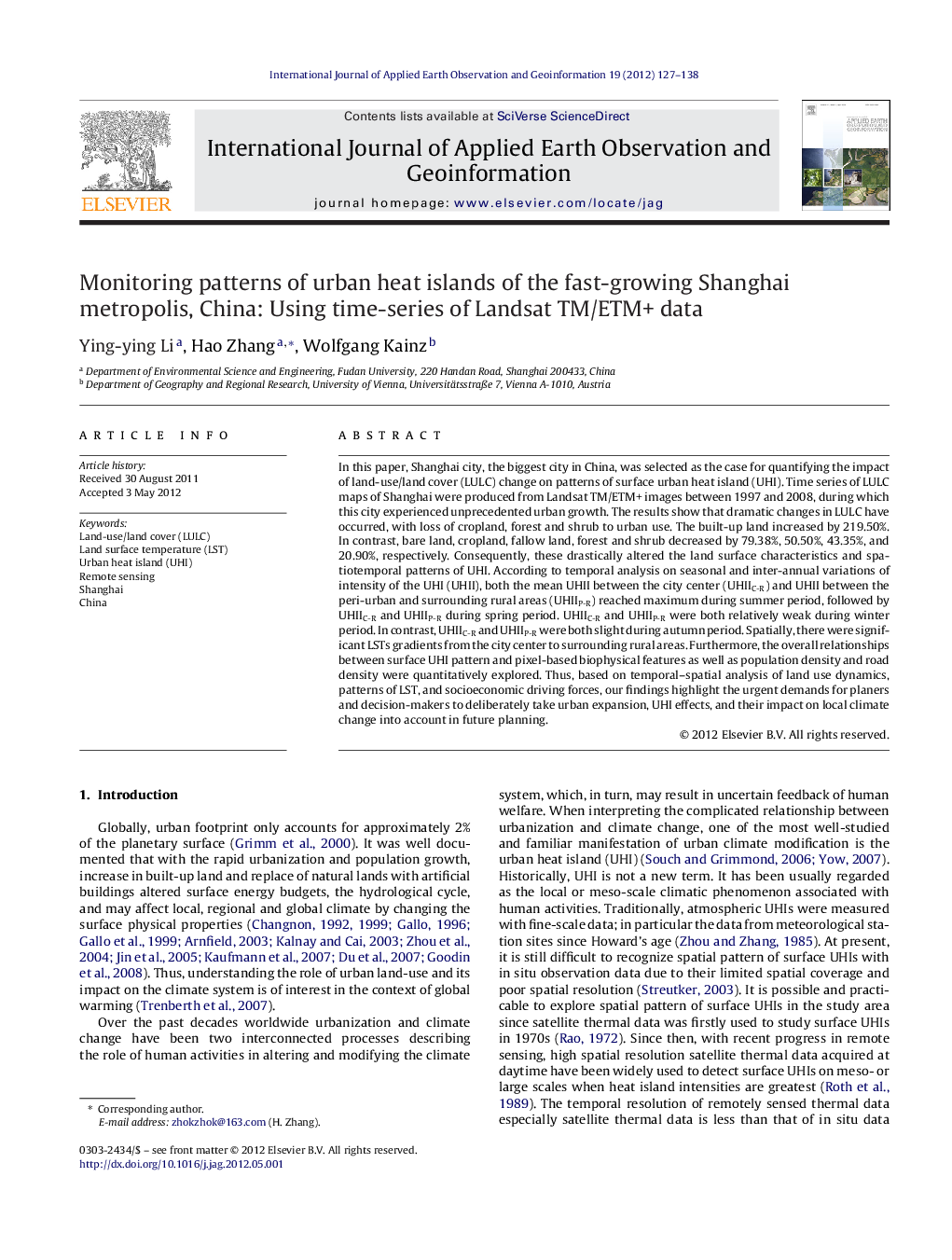| Article ID | Journal | Published Year | Pages | File Type |
|---|---|---|---|---|
| 4464977 | International Journal of Applied Earth Observation and Geoinformation | 2012 | 12 Pages |
In this paper, Shanghai city, the biggest city in China, was selected as the case for quantifying the impact of land-use/land cover (LULC) change on patterns of surface urban heat island (UHI). Time series of LULC maps of Shanghai were produced from Landsat TM/ETM+ images between 1997 and 2008, during which this city experienced unprecedented urban growth. The results show that dramatic changes in LULC have occurred, with loss of cropland, forest and shrub to urban use. The built-up land increased by 219.50%. In contrast, bare land, cropland, fallow land, forest and shrub decreased by 79.38%, 50.50%, 43.35%, and 20.90%, respectively. Consequently, these drastically altered the land surface characteristics and spatiotemporal patterns of UHI. According to temporal analysis on seasonal and inter-annual variations of intensity of the UHI (UHII), both the mean UHII between the city center (UHIIC-R) and UHII between the peri-urban and surrounding rural areas (UHIIP-R) reached maximum during summer period, followed by UHIIC-R and UHIIP-R during spring period. UHIIC-R and UHIIP-R were both relatively weak during winter period. In contrast, UHIIC-R and UHIIP-R were both slight during autumn period. Spatially, there were significant LSTs gradients from the city center to surrounding rural areas. Furthermore, the overall relationships between surface UHI pattern and pixel-based biophysical features as well as population density and road density were quantitatively explored. Thus, based on temporal–spatial analysis of land use dynamics, patterns of LST, and socioeconomic driving forces, our findings highlight the urgent demands for planers and decision-makers to deliberately take urban expansion, UHI effects, and their impact on local climate change into account in future planning.
► LULC maps of Shanghai show this city experienced unprecedented urban growth during 1997 and 2008. ► LULC change drastically altered land surface characteristics and spatiotemporal patterns of UHI. ► Relation between UHI patterns and pixel-based biophysical feature was quantitatively explored. ► Our findings highlight relation between urban expansion and UHI effects. ► Urban expansion and UHI effects should be deliberately considered in future planning.
